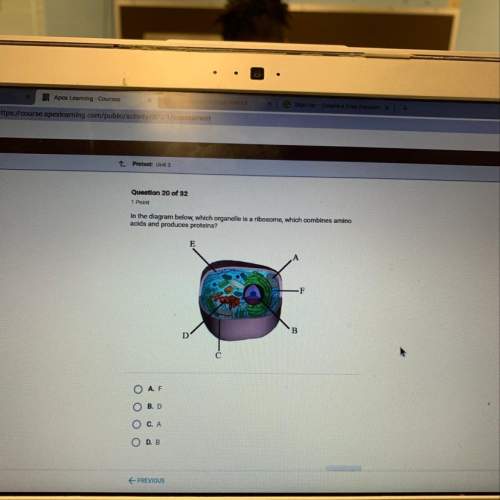
This immense mountain range began to form between 40 and 50 million years ago, when two large landmasses, india and eurasia, driven by plate movement, collided. because both these continental landmasses have about the same density, one plate could not be subducted under the other. the pressure of the impinging plates could only be relieved by thrusting skyward, and forming the mountains.
a) eurasian
b) himalaya
c) rocky
d) ural

Answers: 1
Other questions on the subject: Biology

Biology, 22.06.2019 03:30, makennahudson94
Explain how the number of similarities between the embryos from early stage to late stage is used as evidence of a common ancestry
Answers: 2

Biology, 22.06.2019 05:20, bear342
Use this dichotomous key for insect identification to identify the insect shown. 1. a. insect has one pair of wings. order diptera b. insect has two pairs of wings. go to #2 2. a. front wings thicker in texture than hind wings go to #3. b. front and hind wings are same texture throughout. go to #4 3. a. front wings are short order dermaptera b. front wings cover entire abdomen order coleoptera 4. a. wings with scale on all parts of their area. order lepidoptera b. wings without scales go to #5. 5. a. hind wings smaller than front wings. order ephemeroptera b. front and hind wings nearly equal in size. order odonata the insect pictured is in the order diptera. ephemeroptera. coleoptera. odonata.
Answers: 3

Biology, 22.06.2019 12:40, natishtaylor1p8dirz
Fredrick griffith made a scientific discovery in 1928
Answers: 1

Biology, 22.06.2019 16:30, leannesmith90101
You will create a molecular clock model for an arthropod gene. follow these guidelines to make your model: . your timeline will span from 90 million years ago to the present. the common ancestor in your model is an arthropod that lived 90 million years ago. the gene that you'll track codes for a protein in the species venom . the dna sequence youll track contains 10 nitrogen bases. you can choose the order of the bases and where the mutations occur. this gene mutates at a rate of approximately 0.76 base pairs every 17.1 million years. to build your model,/ calculate the estimated time period it takes for 1 base pair to mutate. the first time period will only show the common ancestor. at the beginning of the second time period, three lineages will diverge from the common ancestor, each with a different mutation in their gene sequences. the first and third descendant species will survive for the rest of the timeline. the second descendant species was extinct 50 million years ago. calculate how long it will take for one full base pair mutation to occur. explain your reasoning by constructing a mathematical equation
Answers: 2
Do you know the correct answer?
This immense mountain range began to form between 40 and 50 million years ago, when two large landma...
Questions in other subjects:



Mathematics, 03.05.2021 21:20

Mathematics, 03.05.2021 21:20

Mathematics, 03.05.2021 21:20



Chemistry, 03.05.2021 21:20


Business, 03.05.2021 21:20







